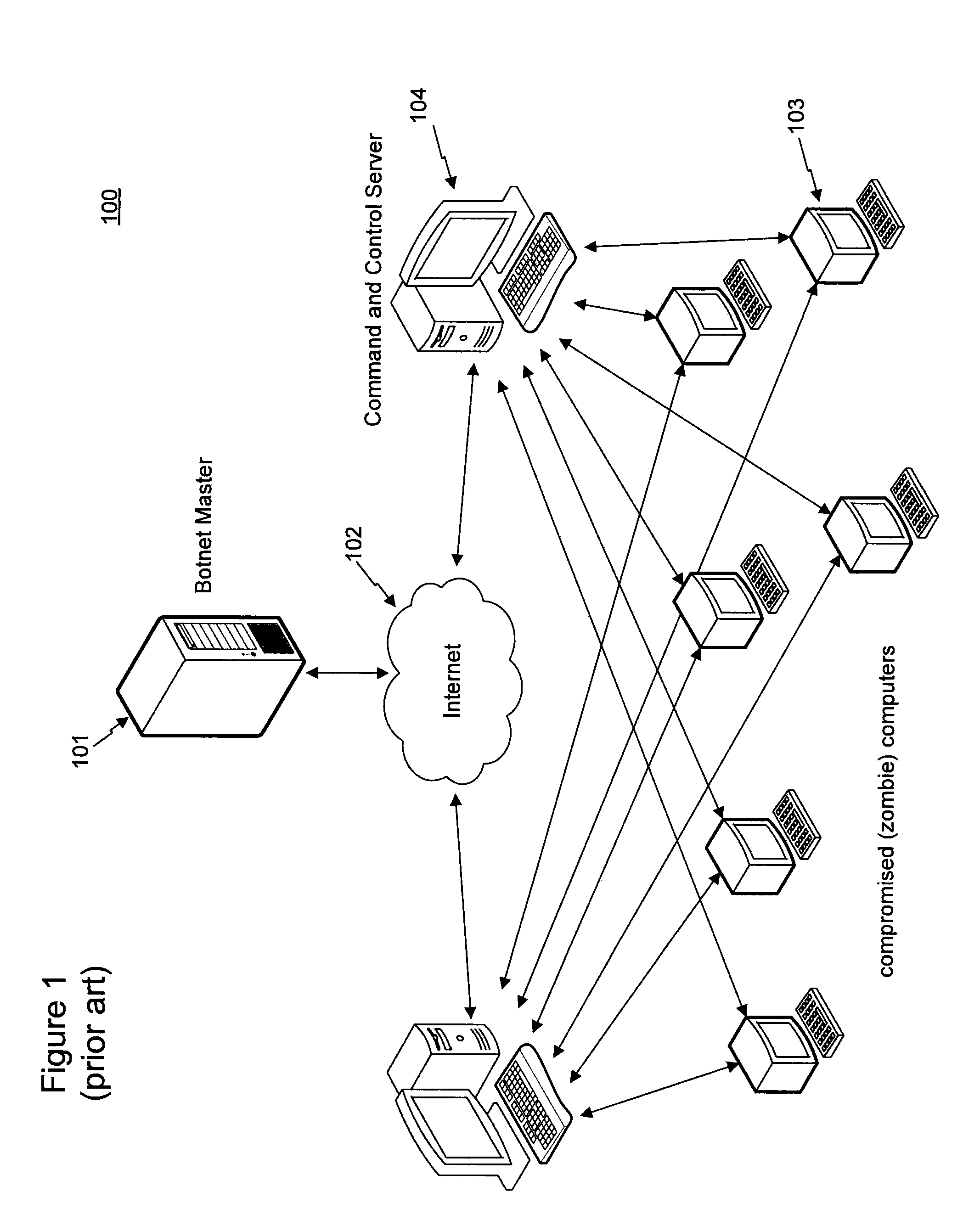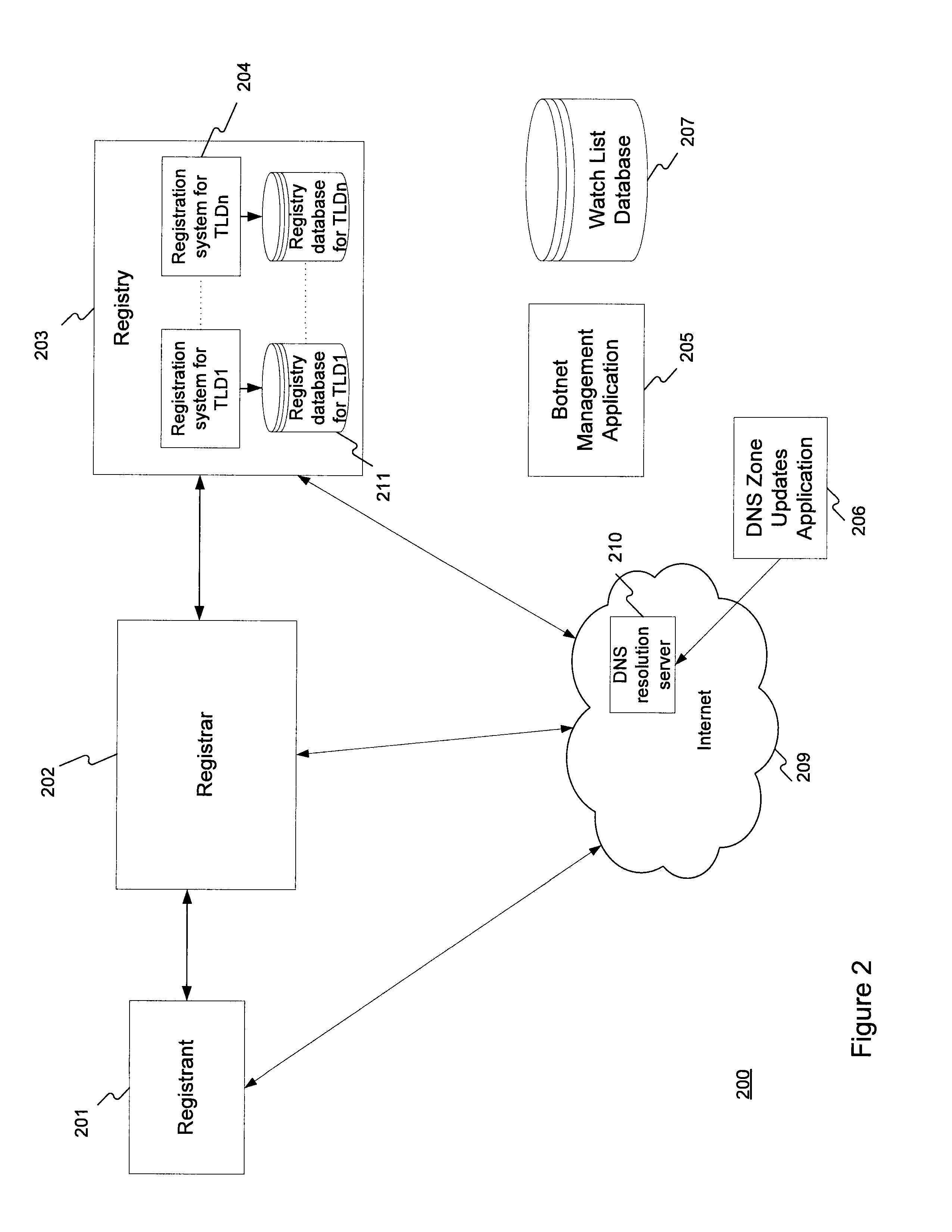Method for administering a top-level domain
- Summary
- Abstract
- Description
- Claims
- Application Information
AI Technical Summary
Benefits of technology
Problems solved by technology
Method used
Image
Examples
Embodiment Construction
[0028]Reference will now be made in detail to the present embodiments of the disclosure, certain examples of which are illustrated in the accompanying drawings.
[0029]FIG. 2 illustrates an exemplary system 200 for carrying out the methods disclosed herein. A Registrant 201 communicates with a Registrar 202, requesting to register a domain name (e.g., “example.com”). Registrar 202, in turn, communicates with a Registry 203 that administers the specified TLD, for example, the .com TLD. Registry 203 includes one or more registration systems 204 for the TLDs it administers. Registry 203 also includes one or more registry databases 211, each corresponding to one of the TLDs Registry 203 administers, for storing and maintaining information regarding the domain name.
[0030]Registration system 204 interacts with a Botnet Management Application 205. In one embodiment, Botnet Management Application 205 may replicate a watch list database 207 to a subset of registry database 211. In other embodi...
PUM
 Login to View More
Login to View More Abstract
Description
Claims
Application Information
 Login to View More
Login to View More - R&D
- Intellectual Property
- Life Sciences
- Materials
- Tech Scout
- Unparalleled Data Quality
- Higher Quality Content
- 60% Fewer Hallucinations
Browse by: Latest US Patents, China's latest patents, Technical Efficacy Thesaurus, Application Domain, Technology Topic, Popular Technical Reports.
© 2025 PatSnap. All rights reserved.Legal|Privacy policy|Modern Slavery Act Transparency Statement|Sitemap|About US| Contact US: help@patsnap.com



